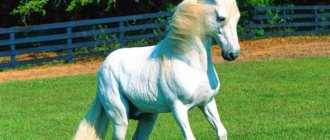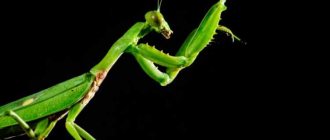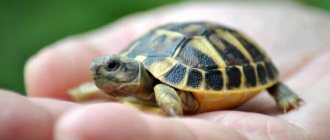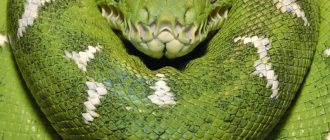Review author: “ZooVita”
Turtles are interesting animals. They have been very popular in Europe for many years, and for good reason. They do not create problems when it comes to care, but breeding these reptiles requires the owner not only to acquire knowledge, but also to be willing to deepen it.
Keeping a pet turtle (features)
“I want to have a turtle at home,” parents often hear from their children. This reptile is an ideal pet for a child, recommended by doctors, because, theoretically, it does not cause allergies.
On the other hand, they are demanding and rather fragile animals. A common mistake in keeping pet turtles is to simply keep them on the floor. They need to be provided with proper temperature, humidity, soil, and safety.
First you need to decide whether the turtle will be an aquatic pet or a typically land turtle. Each group requires different conditions. If it is water-land, a suitable aquaterrarium with the required amount of water is created.
Coating the bottom of the container
It is covered with soil or a bedding of hay. In the first case, the particles of material must be large so that the turtle does not eat too many pebbles. The second option is more summer, since it is not so easy to find hay in winter. It is allowed to fill the bottom with sand, but some reptiles eat it. If such behavior is typical for your pet, then it is better to refuse sand.
Another option is to add a layer of sand and lay a layer of large pebbles on top of it - the pet will sharpen its claws on them. Some species love to burrow, in which case it is worth putting more material in the tank for the turtle to enjoy. You should not use pieces of paper, expanded clay particles, sharp gravel, or litter intended for cat litter boxes, even wood, as soil.
Keeping aquatic turtles (rules)
Often, pet stores sell coin-sized babies and convince the buyer that a 30-liter aquarium will be the ideal solution. This is mistake. Even for a small reptile, the aquarium must be spacious, but for an adult, it must be taken into account that a minimum of 200-300 liters of water will be required.
Effective filtration is required, preferably in the form of an external filter, appropriate lighting, including UV, and a proper diet. Aquaterrariums use soil and gravel.
Do you need neighbors?
The behavior of red-eared turtles in relation to other underwater inhabitants and relatives cannot be called friendly. Reptiles tend to enter into conflicts with each other, and pugnacity especially manifests itself in adulthood. Given this temperament, it is recommended to keep turtles separately from relatives, or provide pets with a spacious terrarium with partitions.
Tips for keeping two or more reptiles in one container:
- Pets must be the same size and age.
- You cannot keep two males in a terrarium.
- Each individual should have personal space and a rest area.
It is important to note that it is not recommended to keep frogs, lizards and snakes together with turtles, as these creatures are perceived by reptiles as food.
Keeping land turtles (rules)
For a land turtle, it is necessary to prepare a terrarium measuring at least 120 cm by 50 cm. The correct temperature must also be guaranteed.
In one part - 30-35 degrees Celsius with low humidity, and in the other - 25-28 degrees with humidity up to 70%. Then the reptile will be able to bask on the “island of heat” created using a heating lamp, or find a cooler place.
You need to choose the right substrate. For most terrestrial species, a homemade mixture of soil, sand and a small amount of clay works well. An alternative is turf, which is a dug-out piece of lawn containing soil.
Decorative elements and hiding places will decorate the terrarium and will be useful. Amphibians need several places to hide and feel safe. You can put pots, coconut shells, twigs with leaves. The presence of sufficient light is necessary for the normal development of the shell.
Feeding
Caring for a turtle also includes preparing a diet and properly feeding the land reptile. The diet of a land turtle should consist of greens, vegetables, fruits, porridge and vitamins. 70-80% of the diet should be plants and greens.
Grass can be collected in summer in a meadow or forest away from the road. Among the greens, turtles can be given dandelion, plantain, clover, lettuce, sorrel, rhubarb, and chamomile.
Juicy food is also necessary in the diet. It is rich in vitamins and contains fiber, which aids digestion. The land turtle can eat cucumbers, zucchini, bell peppers, bananas, pears, and apples.
We have already reviewed a complete list of products for the land turtle in the article “What does the land turtle eat.”
Turtles also need water. The drinking bowl should be of such a size that the reptile can fit completely inside. The water level should reach the middle of the shell, otherwise the pet can easily choke.
As a drinking bowl, you need to use a heavy container with low sides. It is best to dig it a little deeper into the ground so that the turtle cannot turn the container over.
It should be taken into account that the reptile will defecate directly in the drinking bowl. Therefore, it is necessary to monitor the purity of the water; if necessary, the drinking bowl should be washed and clean water should be poured.
Types and breeds of turtles for home keeping
There are 335 species of turtles in the world, but only a few of them can be kept at home. First of all, it is necessary to distinguish between freshwater and terrestrial reptiles. Common types of pet turtles include:
Wood turtle
Scientific name: Glyptemys insculpta. Originally from North America. It is characterized by a dark gray shell. The legs, head and abdomen are orange with black spots, the limbs are short and strong.
Males are larger than females, the size of an adult is 23 centimeters, weight is about a kilogram. They are omnivores. In spring and summer it lives on the surface, in winter and autumn it chooses an aquatic environment.
Steppe tortoise
Dark shell with round light spots. The head and limbs are light, the claws on the paws are well developed. It reaches 22 centimeters in size and lives for a long time. She has excellent eyesight, can recognize people, is sensitive to soil vibrations, and has a developed sense of smell.
Greek turtle
Slightly larger than the steppe one - 25-30 cm. They are kept in a terrarium with a spotlight, next to which it can bask.
Red-eared slider (Trachemys scripta)
Lives in water. The name comes from the characteristic red stripes on the cheeks. She needs an aquarium with lots of plants and rocks. In the summer, if possible, it is worth putting it in a pond; it loves to bask in the sun, under the surface of the water.
It reaches a length of 30 centimeters, females are slightly larger than males. They live about 40 years. Young animals feed on fish, snails and crustaceans, while older animals eat leaves and grass.
Walks
In the summer, the turtle must be walked. To prevent the turtle from running away and getting lost, it is necessary to build an enclosure or fence for it. It is very important to deepen the fence a few centimeters into the ground, since turtles like to burrow into the grass or soil.
Despite the slowness of the land turtle, it is easy to overlook and get lost in the grass. Therefore, you should keep an eye on her while walking.
Do not leave your turtle in direct sunlight. She must have a dark or secluded place where she can hide.
Food for pet turtles (diet)
What to feed pet turtles. Some aquatic species are typical predators, others have a certain percentage of plants in their diet, and others are vegetarians. You need to find out this before buying a pet. They eat live, dried, prepared and frozen food.
Before lunch, frozen food must be thawed and rinsed.
Live food:
- water larvae,
- mosquito larvae,
- tadpoles and frogs,
- daphnia,
- freshwater fish,
- aquarium fish (guppies, gladioli),
- water snails,
- bloodworm,
- water beetles.
However, you should not overdo it with the amount of animal food you eat. Although it should dominate the amphibian’s diet, we must not forget about plant foods:
- pansies,
- daisies,
- dandelion leaves,
- plantain leaves,
- aquarium plants,
- clover,
- water fern,
- raspberries,
- strawberry,
- watermelon,
- grape,
- apples,
- peaches
- apricots,
- tomatoes,
- Chinese cabbage.
Usually they give as much food as the animal can eat in 5 minutes. Adults should be fed 2-3 times a week, young (up to 6 months of age) - 1 time a day, newborns (up to 3-4 months of age) - 2 times a day.
Recommendations before purchasing
Advice for future owners:
It is necessary to find out in advance what the turtle eats and how to care for it. It is important to prepare a certain amount in advance (for a terrarium, enclosure, special equipment and food). It should be taken into account that the animal will grow over time. Therefore, it is important to take care of a larger terrarium or aquarium
There should be free space in an apartment or residential building in order to set up an enclosure for a pet. A mandatory requirement is proper nutrition and care. There must be an interest in the pet. You cannot make a purchase as a gift. Small children quickly get bored with animals and stop caring for them.
The place of detention must be clean and beautiful. The turtle looks impressive in a terrarium. You should not buy several copies at once. It's best to take one and take a closer look.
The best period for purchasing is late spring - early autumn. During the winter period, there is a possibility of buying a sick pet (you can also catch it on the way home). When purchasing an animal from a trusted place, you should not pay attention to the recommendations. It is better to purchase an aquarium before the pet arrives in the house. It is important to make it comfortable for living.
A good purchasing option is to pick up the turtle for free from the old owner who is tired of it or is unable to care for it.
Signs by which the state of health is determined: active movement, absence of discharge from the eyes and nose, presence of a reaction to people, closed mouth.
The price range is from 150 to 30,000 Russian rubles. When purchasing, it is important to ask the seller for a sales receipt or a copy thereof. In addition, a veterinary certificate stating that the pet is healthy is a desirable document. When buying new pets in addition to existing ones, you need to board them for 1 or 2 months. After the expiration of the term, you can place the newcomers with the rest of the animals.
Considering all the recommendations, you can make the right choice and buy a friend for the whole family. In addition, a turtle should be owned by those who know how to contemplate. Over time, she learns to recognize the owner.
What foods should not be given to a turtle (rules)
A common mistake when feeding aquatic turtles is to eat the same food over and over again, usually dried sprouts (gammarus). After several weeks of a monotonous diet, the reptile becomes deficient in various nutrients.
The animal becomes apathetic, loses appetite and desire to live, the condition of the shell worsens, and swelling of the eyelids may occur. Therefore, it is important that the diet is varied and balanced.
You cannot feed your pets only the meat of mammals and birds. It is too fatty, too much protein, and is not found in the turtle's natural diet. Poultry and beef are added only to the turtle's main food. Pork and cold cuts should be excluded from the amphibian’s diet.
Try not to overdo the menu with the amount of salad and fruit, and avoid feeding animals spinach. An important component of a reptile's diet should be foods rich in calcium. This is needed to create armor.
Mr. Tail Explains: Common Mistakes
All problems with these unpretentious pets arise due to the owners’ ignorance of basic maintenance rules. Most often, turtle owners make the following mistakes:
- They do not provide any terrarium for their placement. The pet is forced to look for a secluded corner in the house on its own. He collects dust under cabinets and sofas, and can get hurt and catch a cold from drafts.
- They forget to install an ultraviolet lamp in the turtle's housing. The absence of this radiation spectrum can cause many diseases in your pet.
- Scales are forcibly removed from the skin and scutes from the shells during molting. This is absolutely forbidden to do so as not to injure your pet. When washing, use only a soft cloth.
- They keep several aggressive males together. This can lead to injury and even death to the turtles.
- Wash terrariums using homemade disinfectants. This can easily poison your pets. To clean their territory, you must have your own equipment and special means.
Reproduction of pet turtles
The statement that turtles must hibernate every year is not always true. At home, this is not even advisable. Only a specialist can prepare an animal for hibernation and ensure the correctness of such rest, otherwise it will sleep forever.
If your pet stays in a corner of the terrarium for a long time and tries to burrow into the ground, it is probably getting ready for sleep. To prevent this from happening, it is necessary to fatten it and carefully read specialized literature on ensuring turtle hibernation so that the animal remains alive and healthy. With good care and proper nutrition, pets can live 15-30 years.
If you are serious about running a “turtle” business, it is better to start with 3 individuals of the same age and size - 2 females and 1 male. More than two men compete for territory and ladies. It is better to keep aquatic reptiles separately, allowing them to be together only for mating.
When buying a pet, you need to pay attention to the behavior - this will tell you whether the individual is healthy. The shell should be without cracks, there should be no spots on the skin, the mucous membrane of the mouth should be pale pink in color, saliva should not be sticky, breathing should be calm, no discharge from the mouth or nose.
Most turtles carry salmonella, as well as other bacteria and viruses that can be dangerous (especially to children). Therefore, you need to ensure that your child washes their hands thoroughly when coming into contact with a turtle.
Taking care of your health
Compliance with all the rules for the care and maintenance of waterfowl turtles in a home apartment will protect the animal from possible infections and diseases. However, any pet can get sick. Common diseases and treatments are presented in the following table:
| Disease | Symptoms | Treatment |
| Abscess / Otitis | Tumor in the ears, on the limbs | Operation |
| Pneumonia | Does not drown, falls over, does not eat, wheezes, white mucus and bubbles appear from the nose | Deadly. Treated in a hospital or at home with injections |
| Conjunctivitis/swelling/redness of the eyes | Swollen eyes, redness, suppuration under the eyelids, lack of appetite | Local treatment |
| Soft/Twisted Shell (rickets / osteopenia / hypocalcification) | Softening of the shell, its curvature | The curvature process is irreversible; local treatment |
| Helminthiasis | Diarrhea/constipation, presence of helminths in tests | Treatment by a veterinarian |
| Dermatitis/skin fungus | Increased shedding, skin redness, white growths | Treatment by a veterinarian |
Photos of all types of pet turtles
How to tame a turtle?
In order to establish contact with your pet, you will have to be patient. Turtle treats such as dandelion flowers, tomato or banana pieces will help. Offer treats by hand and avoid sudden movements.
Such regular feeding will soon teach the reptile to respond to the appearance of the owner by turning its body or head. Quite restrained attention, but still.
Once you have gained trust, the turtle can be picked up without fear of being scratched or bitten. Over time, your pet will definitely warm to you and will be happy to make contact.
Turtle in the house: how to provide comfortable conditions for your pet
If we consider wild turtles living in natural aquatic or mixed environments, we can come to the conclusion that they are quite unpretentious. Actually, this is not far from the truth, but they still need certain conditions, and the closer they are to natural ones, the better. You need to prepare the following:
- an aquarium with a volume of at least one hundred liters;
- equip the tank with an ultraviolet lamp - all turtles love warmth, love to bask under ultraviolet rays, and in the case of some species this condition is vital, and in addition, the lamp gives the reptile the opportunity to grow;
- the maximum suitable balance of water and land is 70% to 30%;
- it is necessary to install a water filtering unit;
- You should immediately select the appropriate food.
In addition, the owner should take into account a number of nuances - after all, the turtle is a specific pet, different from the more familiar cats and dogs:
- if the acquired turtle is not the first inhabitant, it is not recommended to place it with fellow turtles without prior quarantine isolation;
- in nature, fish, shellfish, turtles and other living creatures live in the same territory, and, as it seems, quite peacefully... In fact, some of them are food for others, so it is not recommended to house fish and turtles in the same tank - there are positive experiences, but most often the fish end up eaten;
- when your pet shows signs of illness, she becomes lethargic and refuses to eat, you should consult a veterinarian, preferably a herpetologist;
- if the world does not accept turtles living in the same territory, experienced breeders recommend not waiting for serious injuries, but separating the warring individuals in different tanks;
- reptiles should be protected from contact with other pets - most often cats show increased interest in them, so the container must be equipped with a lid that is not so easy to open;
- You don’t have to worry that the turtle will be bored alone - on the contrary, these animals only need a mate for procreation, and in ordinary life, conflicts between individuals are not uncommon;
- special attention must be paid to feeding pets - if the diet is incorrect, the animal will get sick, even death. It is important to consider that turtles can adore food that should never be given to them.
If the difficulties did not scare away, but, on the contrary, sparked interest in these representatives of the most ancient species, you can consider the most suitable “candidates”.











